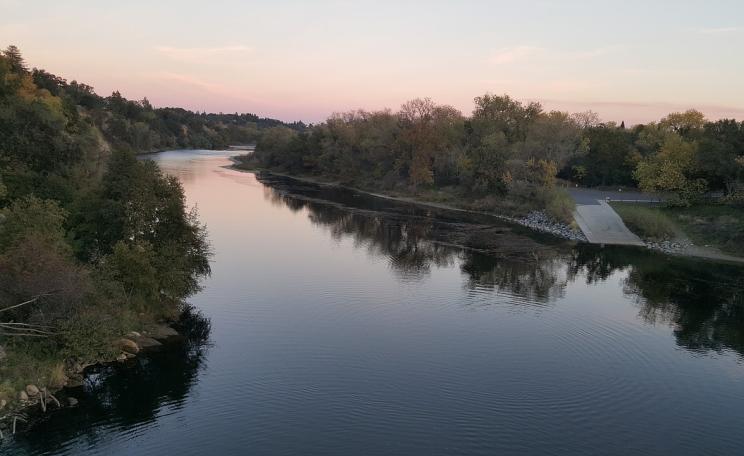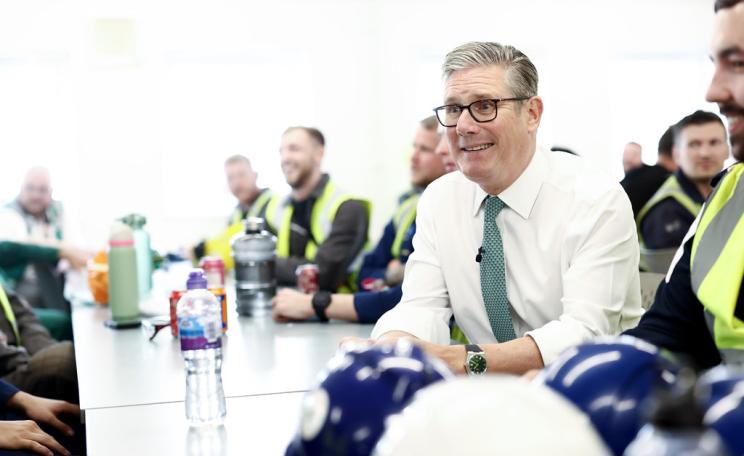x
As the transition to renewables speeds up, governments will have to seriously think about what will happen to people working in the fossil fuel industry.
When governments start planning for national renewable energy transitions, it is important that they are clear about new job creation (in renewables or any other sector) and how to rehabilitate fossil fuel workers and connected communities.
Forward planning
Ken Smith of Unifor explained the need for governments to have a just transition plan. “Suppose there is a man living by the river in a fire zone. He has children and belongings. He doesn’t want to lose things when fire comes. What should he do?
"He should build the bridge before fire comes. That’s what is required. Similarly, countries have to plan a transition. Give training, and deploy fossil fuel workers in other industries. Create jobs before the transition.”
Sandeep asked Ken whether he thinks oil sands workers need a transition plan. He replied, “Yes, absolutely. There are all kinds of things that can be done. There is lots for all of us in Canada. The future doesn’t have to be so gloomy. But we have to plan a transition for workers.
"I was unemployed so I had to move here. But I moved away from my family. Now Fort McMurray is my home and people here are my family members.
"It’s like a temporary community. However, it can’t just work on oil. We need to diversify, get training and develop industries like wind, solar and hydro. This will prevent a collapse.”
Just transition
Ken is not alone. Many other Canadian trade unions are talking about the just transition, along with policy research institutes and non-profit organizations. Throughout India, let alone in Jharia, there is little discussion about it, and even scantier action.
The idea of a just transition has recently started to attract global attention and is being championed by the International Labour Organization (ILO) and the United Nations Framework Convention on Climate Change (UNFCCC).
Just transition was an element in the Paris Agreement, which recognizes “the imperative of a just transition of the workforce and the creation of decent work and quality jobs in accordance with nationally defined development priorities.”
Since then, the ILO has set out Guidelines for a Just Transition towards Environmentally Sustainable Economies and Societies for Alland has agreed to team up with the UNFCCC to help boost global action on just transition.
A few global examples of just transition in practice are coming to the forefront. Following the decline of the coal industry in Germany, some German cities have shown examples of a way forward for former coal communities.
Cultural hubs
Essen, in western Germany, has converted old coal mine sites into cultural hubs by creating industrial heritage museums. Each year, millions of tourists visit the Zollverein Coal Mine in Essen, which was designated a UNESCO World Heritage Site in 2001.
In this area, local coal communities have transformed and reinvented themselves with the help of government, unions and other stakeholders to ensure a sustainable future. This could be one way of helping fossil-fuel-dependent communities transition to a better future.
China and India have also taken some initiative to transform former coal mines. In Liulong, in east-central Anhui province, China has built a huge floating solar project on a lake that covers a now-abandoned coal mine, and the provincial government has plans to expand this project to at least a dozen more sites.
The project employs former coal mining workers from the region, including 57-year-old Yang Xuancheng, who described his switch in professions in an interview for a New York Times article: “This aboveground work is so much more pleasant than the hot air down in a coal mine,” he said.
In India, local governments are mulling over different options to reorient former fossil fuel workers and their communities. Although these initiatives are still at a preliminary planning stage, they are noteworthy developments.
Local initiative
In the Ramgarh district of Jharkhand, about 130 kilometres from Jharia, the local fisheries department is trying to convert mined-out coal mines into lakes and encourage villagers, including former coal industry workers, to form cooperatives and take up fish farming as a new profession.
Ramgarh is a local initiative; there are others at the national level. In 2015, the federal government passed legislation requiring each mining district in the country to set up a District Mineral Foundation (DMF), an agency with a mandate to help communities living in mining areas by empowering them and improving their economic situation.
“It took us about seven to eight years to convince the government,” explained Chandra Bhushan of the Centre for Science and Environment. “The DMFs are responsible for collecting 10 to 30 per cent of the royalty paid by mining companies, and will also be responsible for using those funds to help the people living in those areas.
"The funds are meant to be used for educating people, improving health services and improving nutrition. A part of the money should also be kept as funds for the future. I think some of this money could be used for the just transition.”
One of the key recommendations of the Centre for Science and Environment is that DMF funds should be used “to revive the economy of the area when mining finishes, to avoid the issue of ‘ghost towns.’”
Climate leadership
Finally, there are some interesting preliminary developments in Alberta. In November 2015, the provincial government announced the introduction of a new Climate Leadership Plan. The plan introduced sweeping changes to Alberta’s electricity sector, including the phase-out of coal-generated electricity by 2030.
The plan also included the implementation of a new carbon price on greenhouse gas emissions, efforts to develop more renewable energy, a 100-megatonne cap on oil sands emissions and deep reductions in methane emissions.
Phasing out coal-generated electricity by 2030 means hastening the closure of Alberta’s coal-fired power plants and associated coal mining and processing operations, affecting over 3,000 workers. In order to help this phase-out process progress smoothly, the provincial government created an Advisory Panel on Coal Communities that met with affected communities, such as Hanna, Alberta, that face large-scale job loss because of the plan.
The panel submitted recommendations to the government with advice and options regarding how to support affected workers and communities. The government has also earmarked $998 million from the carbon levy for “large scale renewable energy, bioenergy and technology, coal community transition and other Climate Leadership Plan implementation initiatives.” The Pembina Institute calculated that the government’s plans for fostering renewable energy development and energy efficiency in Alberta could generate more jobs than those lost by retiring coal power.
As these plans are still very much in the development phase, it remains to be seen how exactly government will help affected workers and communities transition.
New skills
All stakeholders need to think about helping making this transition happen. Several of the people we interviewed are already talking about helping fossil fuel workers make a transition to the renewable energy industry.
They think that some fossil fuel industry workers could be trained to acquire new skills relevant to the renewable energy industry, which would not only sustain their families but also help the world move towards renewable energy faster.
These Authors
Sandeep Pai is an award-winning journalist and PhD student within University of British Columbia's Department of Forest Resources Management. Savannah Carr-Wilson works in the field of environmental and Aboriginal law in British Columbia. This article is an extract of their book Total Transition: The Human Side of the Renewable Energy Revolution (RMB, 2018).




